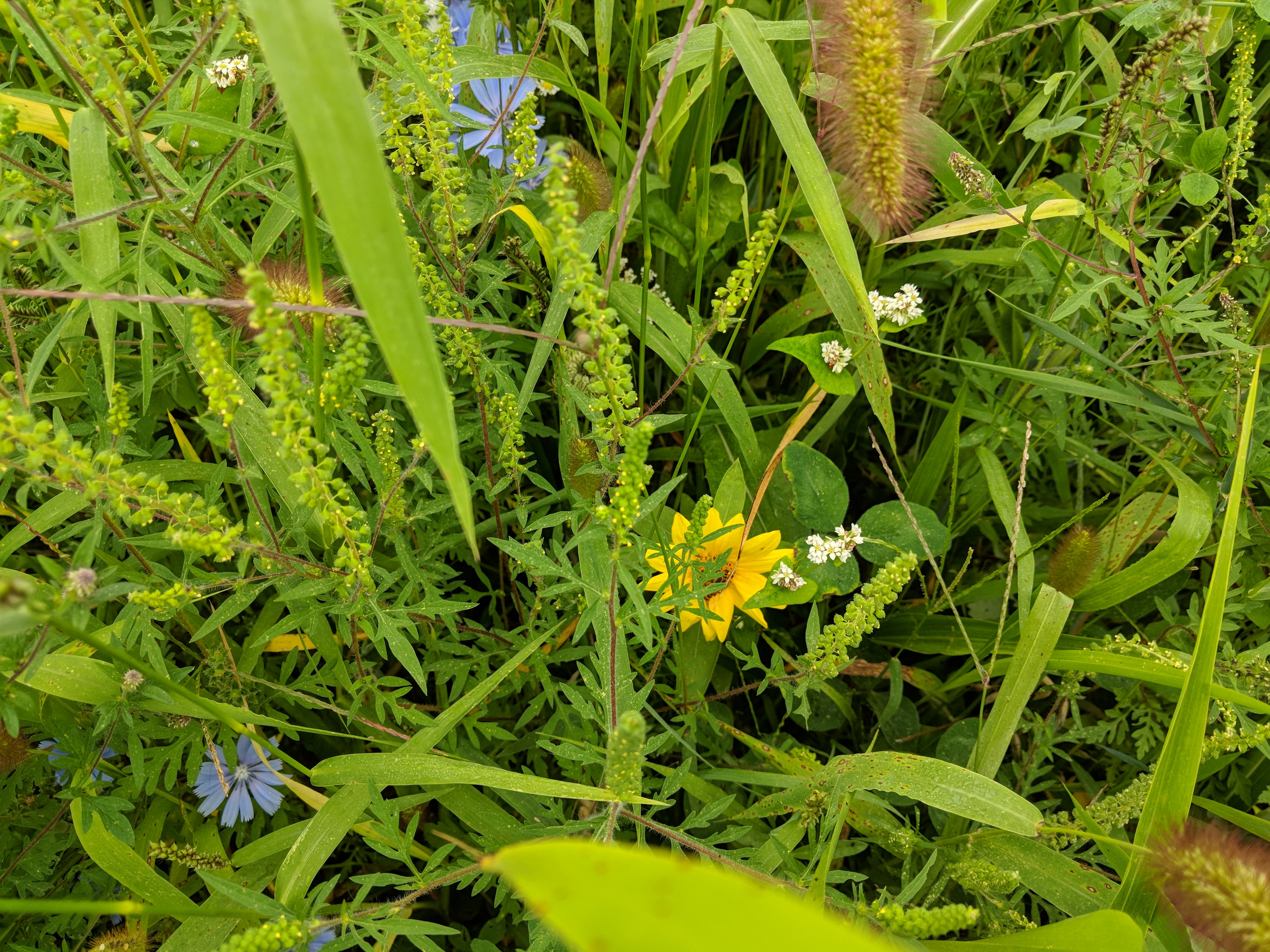I have a different take on weeds in food plots, especially RR soy beans. I rent a 12 acre piece of my land to a local farmer who is a long time acquaintance. He has stated that you can not grow two things in one food plot or field. What he means by that is the weeds will take in water and sunlight that could be going to the preferred plant in the plot. A weed free plot is impossible to attain, but I take all measures to keep as many weeds out of my food plots as possible. This is especially true for my RR ag soy beans, as they are an over winter food source for the deer and turkeys. All my RR ag and Eagle Northern managers mix soy beans get sprayed twice with 41% gly. This kills the weeds when they are fist germinating to allow them maximum growth. I hit them again when they are a certain height. This usually allows them to canopy shutting out any sun and rain to the weeds below. After that point in time, I have done my job and I am just hoping Mother Nature will bring some more rain to my region so their growth can be maximized. My Eagle beans are planted in hopes of taking browse pressure off the ag beans so they can put on as many pods as possible.
That is a traditional view taken from farming. The problem with that view is that the objectives of a farmer are different than someone managing for wildlife. There is a different success definition for a farmer as well. For a farmer, anything that distracts from his profit margin is a weed (either plant, technique, or method). When America was defined by small farmers, long term sustainable thinking was largely overwhelmed by survival. If you don't make it from one year to the next, it doesn't much matter what you have done to improve success 5 years or more down the road.
As wildlife managers, we are plugging holes in the BCC bucket. Food plots are a tiny fraction of a deer's diet. We can not really change the underlying limitations any location has with soil, weather, and such. Sure, we can improve create quality food in food plots, but since this is a fraction of a deer's diet, it is very high cost with a low impact if done arbitrarily. Nature goes through cycles of boom and bust. The way we can improve the BCC in a sustainable way is to focus food plots to provide quality foods when nature is otherwise stressing deer. This doesn't remove any of the underlying limitations but evens out the bust cycles. It doesn't matter if a deer is browsing a high quality "weed" like a poke berry or browsing my soybeans.
For a deer manager, the only "yield" that matters is the yield that ends up in the belly of a deer when it was a more nutritious option than nature is offering at the time. So, as long as the field has some quality food left over when the stress period it was planted to support is over, it had supported deer all it can. We also have another advantage over the farmer. We do not harvest like farmers do. Our harvest is done by animals which is similar to grazing where nutrients from defecation are cycled back into the soil. The difference is our grazing is done and a much lower intensity (fewer animal-hours per acre).
Both of these factors make it much easier for deer managers to use long-term sustainable techniques which include weed tolerance and other long-term soil health approaches. As science and mechanics have moved forward, farmers are moving in this direction as well. No-till farming is one technique that farmers have found that improves long-term soil health while still allowing them to be profitable from year to year and reducing their input cost over time. For farmers, "weeds" are anything they did not plant and will not harvest because it takes resources from their crop.
We can learn a lot from farming but it only goes so far. We need to realize that we have different objectives and limitations. I'm not saying don't use herbicides or don't control weeds. I'm saying that we need to understand what a "weed" is to a deer manager and when to control which weeds and when to tolerate them.
Thanks
Jack




